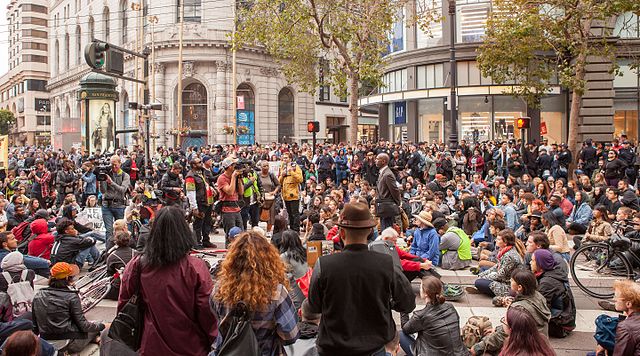La st week the Houston Chronicle reported the arrest of a therapist last March for resisting arrest. When she was pulled over for allegedly crossing a double white line, the young woman dialed 911 asking for another officer because she was afraid of the patrol officer who had threatened to taze her.
st week the Houston Chronicle reported the arrest of a therapist last March for resisting arrest. When she was pulled over for allegedly crossing a double white line, the young woman dialed 911 asking for another officer because she was afraid of the patrol officer who had threatened to taze her.
Was there provocation? Did the Officer use excessive force?
Ms. White’s attorney released the surveillance video video from the area dubbed with the official recording of the 911 call. For several minutes we see the officer standing by, shouting at times, while she calmly talks with the dispatcher. Then, when the dispatcher connects her with the officer’s department, he suddenly grabs his handcuffs and then grabs her. There appeared to be no provocation other than her statement to his supervisor that the officer was harassing her. She yells that he is trying to break her arm and we see parts of the struggle that ensues. The dispatch tape indicates that she rapidly goes from calm to incoherent as he manhandles her.
Conflicting Expectations
Ms. White screams, “Please get your hands off of me. What is wrong with you? … Why are you doing this?…I am a woman.” It was obvious that she expected to be treated with respect.
The officer was cleared by the department. They said that he was trained to be wary and he acted properly. From their standpoint, she should have gotten back in the car. Her failure to do that, justifies the manhandling and charges.
If she is convicted, the newspaper reports that she could lose her livelihood.
De-escalation and solutions
This video is less violent, when compared to much more egregious examples of police action since cell phone video began wide use. Ms. White wasn’t killed or badly hurt. It seems that changes in policing systems and police actions are needed. Police are called on to deal with people on their worst days. We call the police when our neighbor flips out or when we can’t deal with one of our relatives in the midst of a mental crisis. Officers receive very little, if any training, in de-escalation.
Several recent federal reports indicate the problem is not so much bad officers as a broken system.
In addition to the long list of situations that we ask police officers to handle that they are not trained to do, reports on individual police departments indicate that the system is broken.
This week the Justice Department issued its report on Baltimore PD. Key findings were that the PD’s system targeted African-Americans and failed to supervise and train officers. It called out “zero tolerance” policing and said it often resulted in violations of the Constitution. Under that program officers reported about 300,000 stop and frisk incidents in a five year period. Yet, an audit showed that in 2014 alone, there were more than 400,000 stops in a city of about 625,000.
Some examples are telling. The report cites one middle aged black man who was stopped 30 times in four years and never cited for anything. In addition, investigators also found evidence that some department leaders ordered officers to target black residents.
The attitude of the brass became crystal clear when one of the Justice Department investigators did a ride-along. The supervisor pointed to several black men standing on the sidewalk and told the patrol officer to stop and question them; then disperse them. The officer protested that he didn’t have a reason to do that. His boss’s reply was: Think something up.
Lax oversight, an us vs them mentality
The Baltimore report echoes findings in cities and towns across the nation. The ideas for police reform are many and varied. A robust complaint system is often cited. Yet, after reviewing a statistically valid sample of about 850 use of force reports, the feds concluded that supervisors approved all but a handful of complaints that they deemed questionable.
When internal oversight fails to curb abuse, individual citizens and groups can take their complaints to our courts. Lawsuits provide outside scrutiny and high profile examples that contribute significantly to creating the impetus for change.



